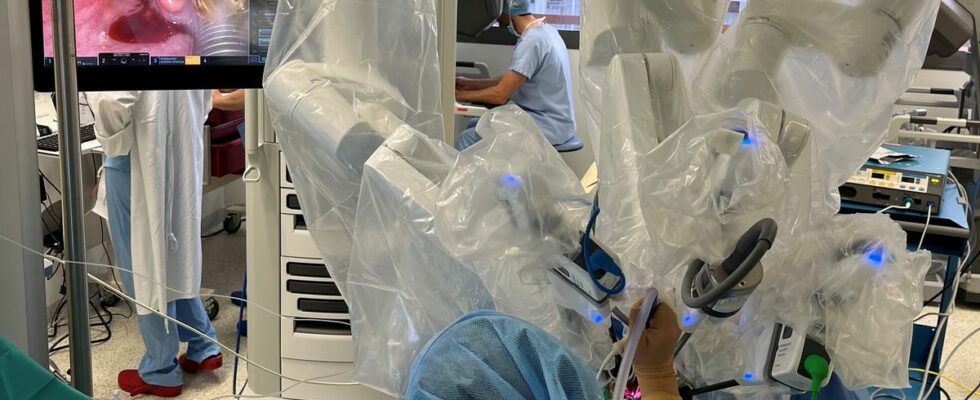“I saw her again in consultation before Christmas, she is fine, there were no postoperative consequences and there is no sign of recurrence of the disease for the moment”. A little over three months ago, Nicolas Doumerc and Thomas Prudhomme, urological surgeons at Toulouse University Hospitalcarried out an unprecedented operation to save the kidney of a patient suffering from cancer.
A world first even. “There were three phases. We removed the kidney robotically, a nephrectomy, then we put it on a table outside, we removed all the tumors. Then it was reintroduced through the same incision into the patient’s abdomen. Then we reinstalled the patient to transplant this lower kidney, ”explains Doctor Doumerc.
These three stages, this team from Toulouse masters them very well, because they practice them regularly, but never all at the same time. “Robotic nephrectomies are done every day, putting the kidney on a table is done twice a week with living donors since we are transplanting kidneys donated by people from the same family. And kidney transplants, robotic transplants, that’s one of our center’s areas of expertise. We had the three skills, I put them end to end, it’s something that had never been done, that’s why it’s a first, “says the doctor with simplicity.
An innovative surgical technique that allowed the sexagenarian to keep her two kidneys, which was far from certain. And better recovery thanks to a single insicion.
Do everything possible to keep both kidneys
It was in October 2021, during a scan, that the doctors discovered tumors on the two organs of this woman, now 68 years old. After a first partial surgery, she had a recurrence and the members of the urology department decided to use radiofrequency, this technique which allows radiologists to remove tumors using needles inserted through the skin. They propagate an electric current that produces heat and destroys tumours.
If this technique for the right kidney had worked well, on the left kidney, the tumors were badly placed. “We tried radiofrequency on the left kidney and it was during this gesture that the ureter, the pipe that goes from the kidney to the bladder, was heated. It became stenotic, blocked over a significant length, which caused the kidney to become blocked,” explains Nicolas Doumerc.
To keep this kidney working, the patient had a nephrostomy, in other words, a probe that allows the secreted urine to be diverted has been placed in his back. A heavy device that she had to support for several months. “We had to find a solution and that’s how we thought about killing two birds with one stone: that is to say both lowering his kidney to solve his ureter problem, and removing the tube in the back, and then to remove all the tumors which remained to him and which were not accessible any more to a radiofrequency treatment , continues the surgeon.
A success for the patient who had a lot of trouble living with her probe, but above all because she was able to keep her two kidneys. “In kidney cancer, strategies must be developed to remove the tumours, preserve both kidneys and thus keep the nephrotic capital, this ability to ensure their function. Because we know that patients with kidney failure have a much lower survival rate than those who have full capacity,” concludes Dr. Doumerc, whose department performs 300 kidney surgeries each year.

